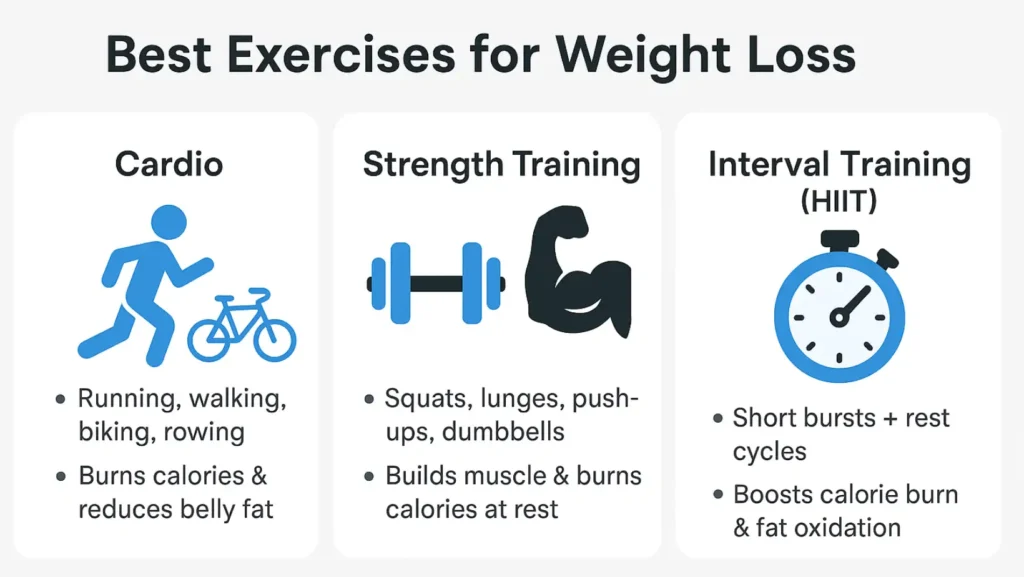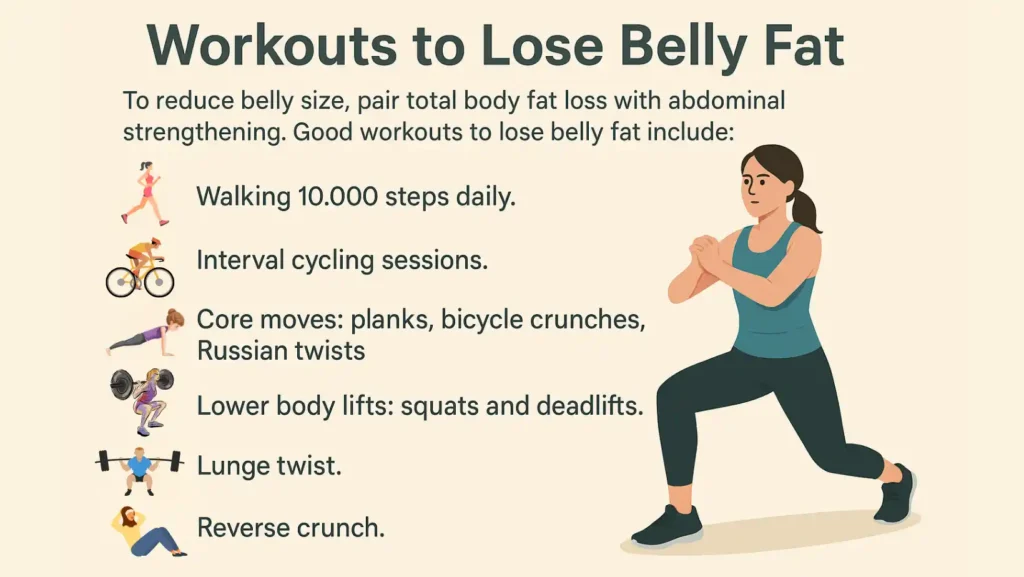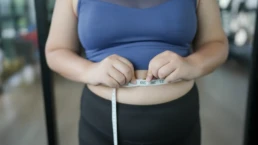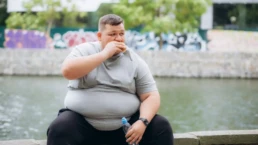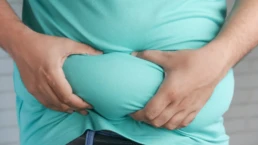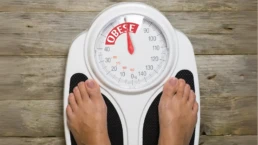Exercise for weight loss is often praised as the key to trimming fat. But is it enough by itself? Many people hit the gym or pound the pavement every day, only to feel disappointed when the scale refuses to move. Others wonder if working out harder will finally push their bodies into change. The truth is more layered than it seems.
Table of Contents
ToggleLet’s explore what science says about exercise and fat loss, why food still matters, and how you can design a plan that works.
Can Exercise Alone Cause Weight Loss?
This is one of the most common questions: can exercise alone cause weight loss? The simple answer is yes, but only under certain conditions. Exercise increases energy expenditure, meaning your body burns more calories. If those calories are not replaced with food, the body dips into fat stores for fuel. Over time, this creates a caloric deficit, leading to fat loss.
However, reality is more complicated. The body has built-in systems to protect weight. After a hard workout, you may feel hungrier. That hunger drives you to eat more, often without noticing. Research shows many people replace the calories they burn within hours of training. A one-hour run may burn 500 calories, but a single soda or alcoholic beverage can undo the effort in minutes.
Also, exercise can trigger what experts call “compensatory behavior.” You may move less later in the day because you are tired. This lowers your overall metabolic rate, slowing weight loss. For this reason, weight loss with exercise only tends to be small and slow.
In clinical trials, exercise-alone groups often lose less than 5 pounds over several months, while diet-change groups drop significantly more. Still, exercise is not useless. It makes the body healthier, strengthens the heart, lowers blood sugar, and supports exercise adherence and consistency in the long run.
Diet vs. Exercise for Weight Loss
The diet vs exercise for weight loss debate has been ongoing for decades. Both matter, but in different ways.
Food intake plays the biggest role in immediate fat loss. Cutting 500 calories per day from food is easier than burning 500 extra calories through workouts. A single muffin can add 400 calories, while a one-hour walk may only burn 250. This is why the importance of diet in fat loss cannot be overstated.
On the other hand, exercise is crucial for keeping weight off. When people lose weight through diet alone, the body often loses muscle mass or lean muscle along with fat. This reduces resting metabolic rate, making future weight regain more likely. Exercise protects muscle and keeps the metabolism stable.
The most effective method is combining exercise with healthy eating. Studies show people who combine both achieve sustainable weight loss strategies. They keep fat off longer, feel better, and maintain higher energy levels.
Best Exercises for Weight Loss

Not all workouts burn the same. Some are more effective for fat loss, muscle building, or cardiovascular health. Here are the best exercises for weight loss according to research and expert recommendations.
Cardio
Cardiovascular exercise (running, walking, biking, jogging) increases calorie burn quickly. Steady-state cardio like walking and cycling is easy to stick with. Running and rowing burn more calories per minute but are harder to sustain for beginners. Cardio also reduces visceral fat, the dangerous type around organs.
Strength Training
Resistance training and strength training is vital because it builds muscle. Muscle tissue is metabolically active, meaning it burns calories even at rest. Squats, lunges, push-ups, and lifting free weights, machines, dumbbells and weight bench are excellent. Two to three sessions per week preserve muscle during weight loss.
Interval Training
High-intensity interval training (HIIT) alternates short bursts of effort with rest. It raises post-exercise calorie burn, increases fat oxidation, and improves fitness in less time.
In short, the best workouts to lose weight blend cardio, strength, and intervals.
Exercises to Lose Belly Fat
Many people ask about exercises to lose belly fat, but spot reduction is a myth. Doing sit-ups alone won’t shrink your waist. Fat loss occurs across the body. However, certain workouts are especially effective at reducing abdominal fat.
Aerobic activity like brisk walking, cycling, and swimming lowers visceral belly fat. Strength moves like deadlifts, planks, and squats improve core tone. Over time, these make the midsection leaner and stronger.
Example: a 12-week walking program paired with strength training has been shown to reduce waist circumference significantly, even without strict dieting.
Workouts to Lose Weight
Effective workouts to lose weight should be practical and sustainable. A weekly sample plan:
- 3 cardio sessions: brisk walking, cycling, or jogging for 40–60 minutes.
- 2 strength workouts: full-body training with compound moves.
- 1 interval session: HIIT or sprints for 20–30 minutes.
- 1 rest or active recovery day: light yoga or stretching.
The goal is steady calorie burn, improved fitness, and protection of muscle.
Workouts to Lose Belly Fat

To reduce belly size, pair total body fat loss with abdominal strengthening. Good workouts to lose belly fat include:
- Walking 10,000 steps daily.
- Interval cycling sessions.
- Core moves: planks, bicycle crunches, Russian twists.
- Lower body lifts: squats and deadlifts.
These moves increase calorie burn and shape the body as fat decreases.
How Much Exercise Do You Need for Weight Loss?
How much is enough? Experts suggest 150 minutes of moderate-intensity exercise weekly. That equals 30 minutes per day, five days a week. For stronger results, aim for 250–300 minutes.
Aim for 150 Minutes of Cardiovascular Exercise
Start small if needed. Brisk walking, swimming, or light cycling are excellent. Build up to 45–60 minutes for maximum effect. Moderate cardio improves fitness, heart health, and weight control.
Hit the Weights for Strength Training
Strength training is often skipped but critical. Two to three weekly sessions protect muscle, improve posture, and enhance fat burning. This is how you boost your role of nutrition in body composition while staying lean.
Use a Heart-Rate Monitor
Using a heart-rate monitor or fitness tracker ensures you work in the right zone. It can track progress, calories burned, and motivate consistency. Data-driven training prevents underestimating effort.
Weight Loss Exercise Plan
Here’s a weight loss exercise plan for beginners:
Week 1–4
- Walk briskly 30 minutes, 5 days.
- 2 light strength sessions.
Week 5–8
- Add 1 HIIT session.
- Increase walking to 40 minutes.
- 2 strength sessions with added weights.
Week 9–12
- 3 cardio sessions (50 minutes).
- 2 strength sessions.
- 1 HIIT session (20 minutes).
Stick to this plan and adjust as fitness improves. Use apps like MyFitnessPal, Lose It!, FatSecret to track both workouts and food.
Track Progress Beyond The Scale
The scale / body composition (Bod Pod, 7-Site Skinfold) is only one tool. Weight alone can mislead. You may lose fat but gain muscle, leading to little scale change. Instead, track:
- Waist and hip size.
- Progress photos.
- Performance in workouts.
- Daily energy levels and mood.
These give a more accurate picture of success.
Use A Calorie-Tracking App
Apps help reveal hidden calorie intake. Many people underestimate food portions. Tracking improves awareness and helps maintain a calorie balance (calories in vs calories out). Avoid empty drinks like soda or alcohol, which add calories without nutrients.
Logging workouts alongside meals provides a fuller view of progress and strengthens exercise and appetite control.
The Bottom Line
So, can you rely on weight loss with exercise only? In theory, yes. In practice, most people need both diet and exercise. Food changes drive initial fat loss. Exercise ensures health, muscle protection, and long-term success. The best strategy combines the two for lasting results.
Remember, exercise and physical activity does more than cut fat. The physical activity benefits beyond weight loss include better mood, stronger bones, better sleep, and disease prevention. Even if the scale moves slowly, your body and mind are still changing.
For safe, effective results, speak with a doctor or dietitian. They can design a personalized program.
FAQs
Can you lose weight by just exercising?
Yes, but most people lose small amounts. Lasting fat loss usually happens when exercise is paired with food changes and calorie awareness.
Is working out alone enough to lose weight?
No, exercise alone often leads to minimal fat loss. Combining food changes with workouts produces greater and more sustainable results.
What is the 3 3 3 rule for weight loss?
It means 3 meals, 3 small snacks, and 3 workouts per week. It’s a simple guideline, not a universal rule. Personal needs vary.
Is 30 minutes of exercise a day enough for weight loss?
Thirty minutes daily is great for health. For fat loss, higher intensity or longer sessions, up to 250–300 minutes per week, work better.
What happens if I exercise but don’t diet?
You’ll get fitter and healthier, but fat loss may stall. Hunger and extra eating can cancel the calorie burn from exercise.
What is the fastest way to lose weight?
The fastest safe way combines food adjustments, cardio, and strength work. Crash methods may harm health. Focus on safe, steady fat loss with professional guidance.

This article is medically reviewed by Dr. Chandril Chugh, Board-Certified Neurologist, providing expert insights and reliable health information.
Dr. Chandril Chugh is a U.S.-trained neurologist with over a decade of experience. Known for his compassionate care, he specializes in treating neurological conditions such as migraines, epilepsy, and Parkinson’s disease. Dr. Chugh is highly regarded for his patient-centered approach and dedication to providing personalized care.

